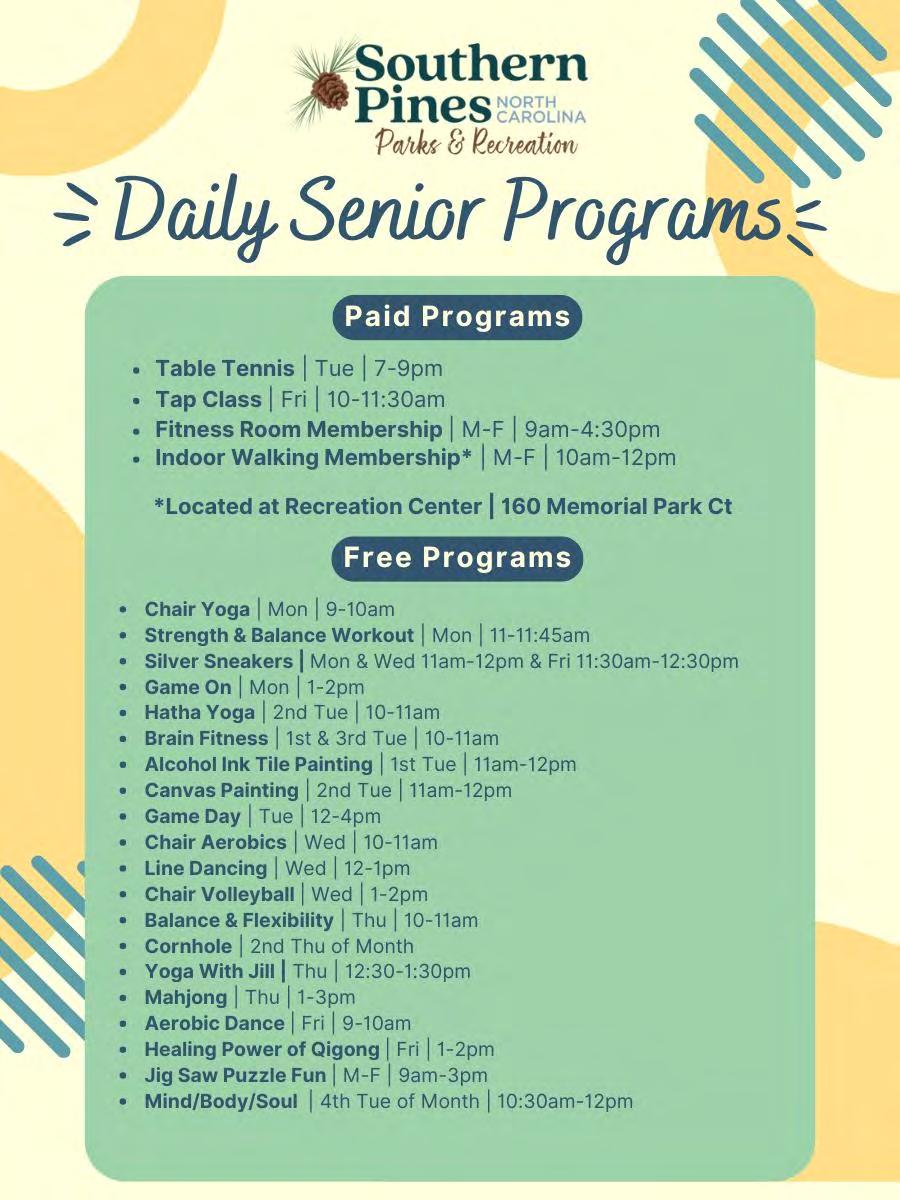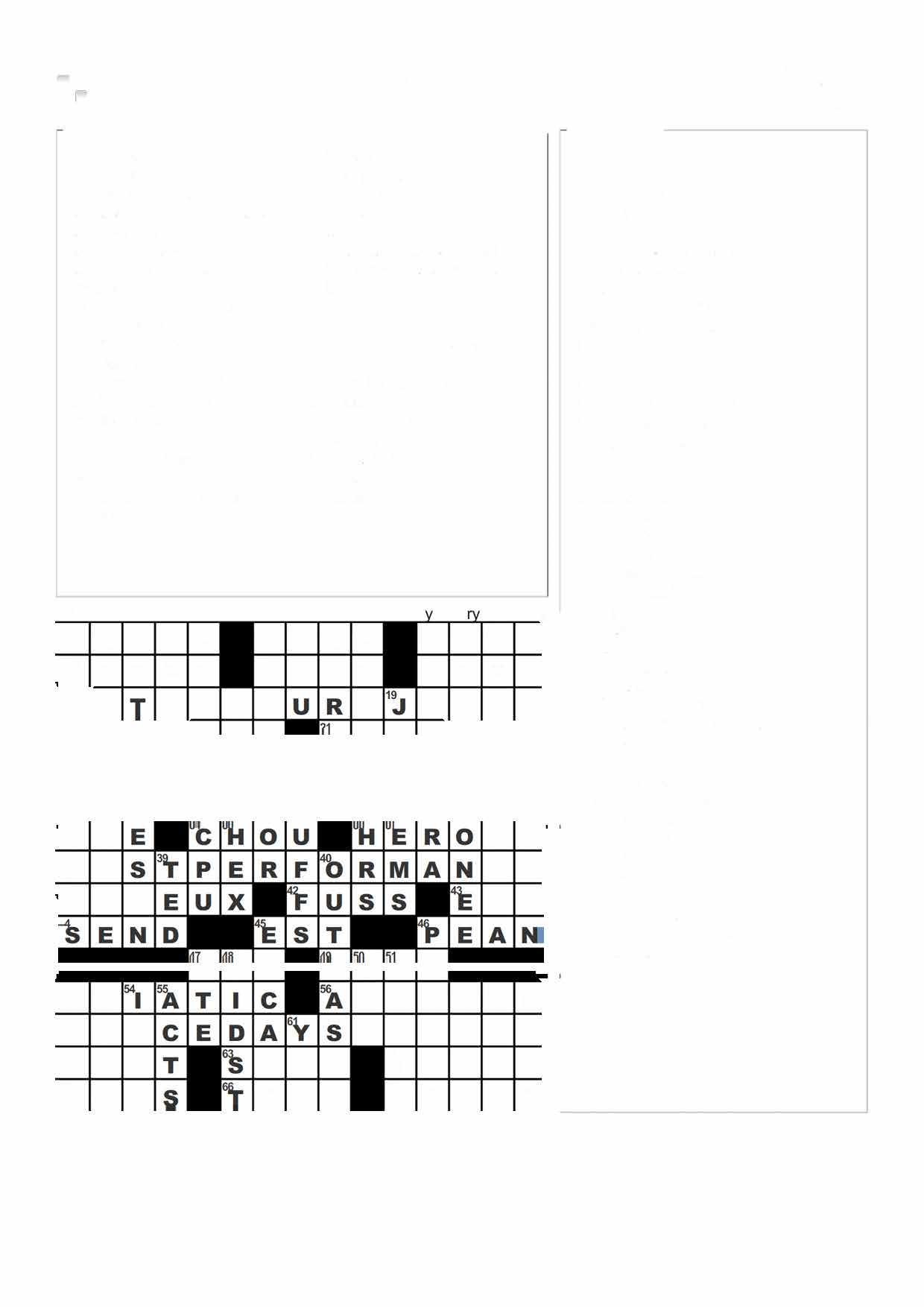MAY 2025







PHYSICAL WELLNESS FOR SENIORS: THE HIDDEN EPIDEMIC OF MUSCLE LOSS— AND HOW TO REVERSE IT AFTER 50
When we think of aging, we often picture gray hair or wrinkles. But one of the most significant—and silent—changes that occurs in the body after age 50 is something few people talk about: muscle loss. Just a few months ago, at the tender age of 49, I realized I had to hold onto the treadmill handrails to avoid losing my balance. It was shocking, since I’ve walked on treadmills most of my adult life. I realized: maybe I’m not quite as strong as I used to be? Spending hours a day at a desk or otherwise seated has taken a toll as I’ve returned to fulltime work. I’m less active and more sedentary. I wonder if I’m not just losing my balance but my muscle?

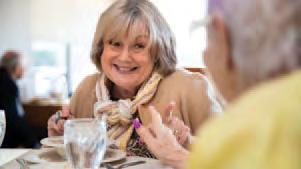

Embrace
filled







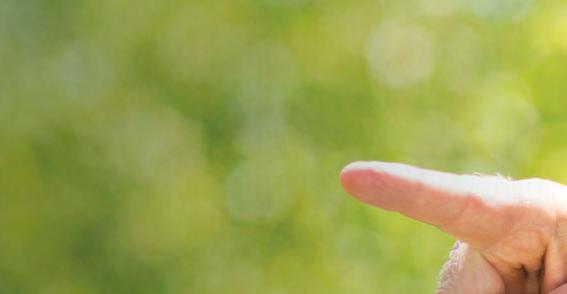







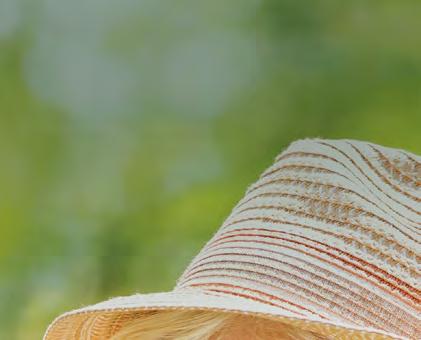


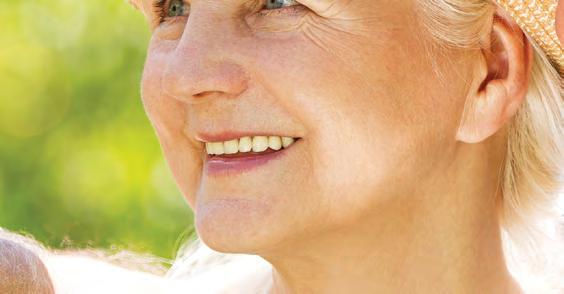
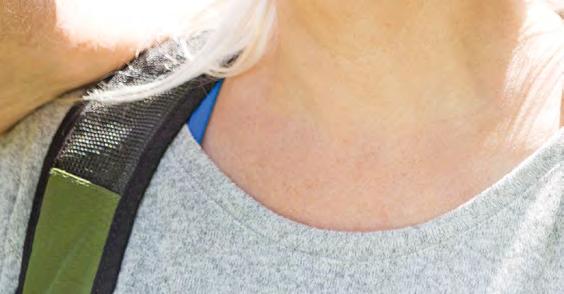
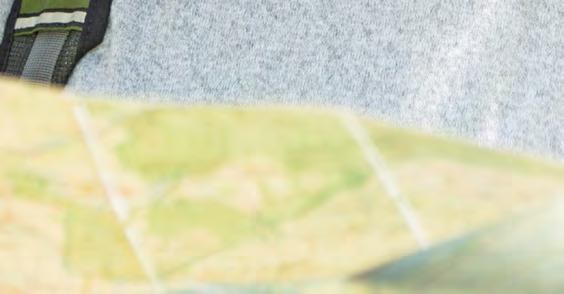






appointment with him to discuss driving. At a minimum, ask if he is willing to talk to his doctor about this. Try not to dominate the discussion but be an active participant. Make sure you are documenting the incidents you have observed; having this in writing can be helpful. If you have tried to reason with your dad, involved his care team, and he simply won’t comply, you can report your concerns to the state DMV. This will trigger a process of evaluation from a medical team and can result in them legally revoking his license.
Another option might be to involve a third party to assess his driving skills. There are courses that evaluate and work to enhance driver safety. These may be offered through organizations who work with seniors and are typically run by occupational therapists. A quick internet search can help you locate any in your area. These evaluations provide feedback on risks and deficits and can also recommend adaptive devices that can be offered, such as pedal extenders or panoramic side mirrors. Some insurance companies will even offer a discount for completing the driver safety course.
Medical diagnosis might also play a role. Multiple chronic conditions can have a compound effect. A change in condition or new medication is also a great time to evaluate driving. Sometimes this can be a springboard to get a person to “temporarily” give up driving, and they simply continue to extend that time. It’s like giving up driving with a reason that provides validation.

If your dad uses his driver’s license as his main source of ID, you can offer to take him to the DMV to have a state ID issued, which gives him something to carry in his wallet. You want to take away the fear that is associated with the change perceived as a loss of independence. Ensure he has other forms of transportation available to him. Help him set up a schedule, so he knows the how, what, when and where transportation will occur. Resources could include family, friends, paid transportation, a caregiver or county transportation.
Ultimately, if a person continuing to drive is creating a significant safety risk to themselves and others, the issue needs to be addressed. Do not wait for a crisis or accident that could have a detrimental outcome and create financial liability. If he is involved in an accident, the insurance company will request medial records and often a medication list. If they can find him at fault, they will. This can have serious financial implications.
Ultimately, you want your dad to be a part of the process and help him understand that it is not just a question of “can he” drive the car, but “should he” drive the car.


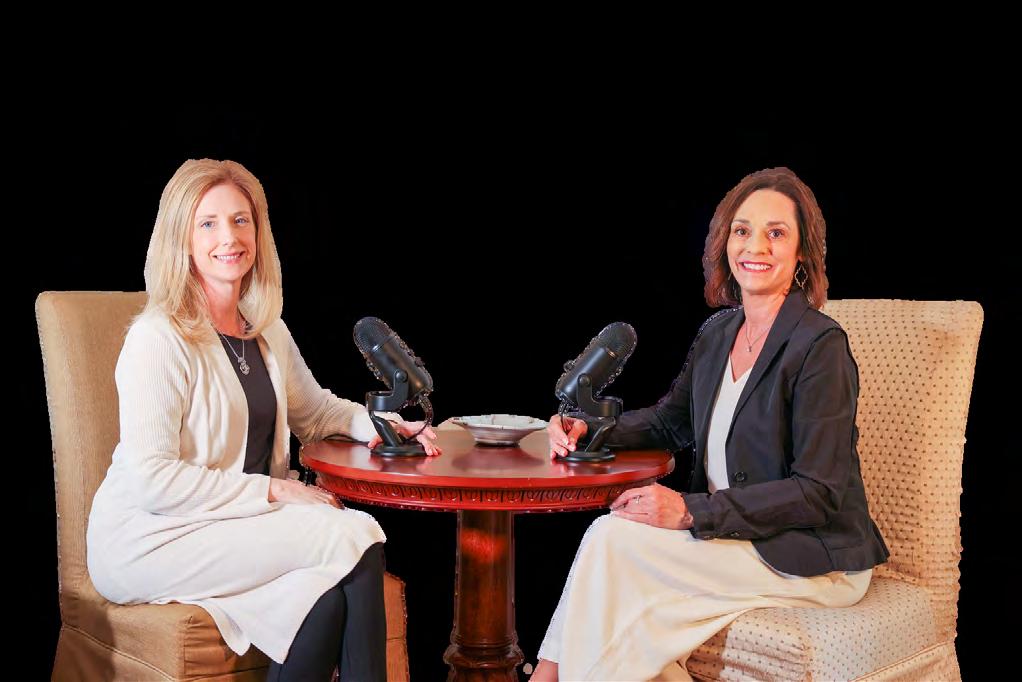
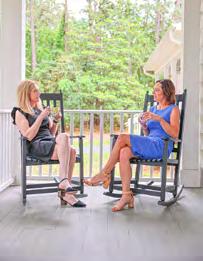




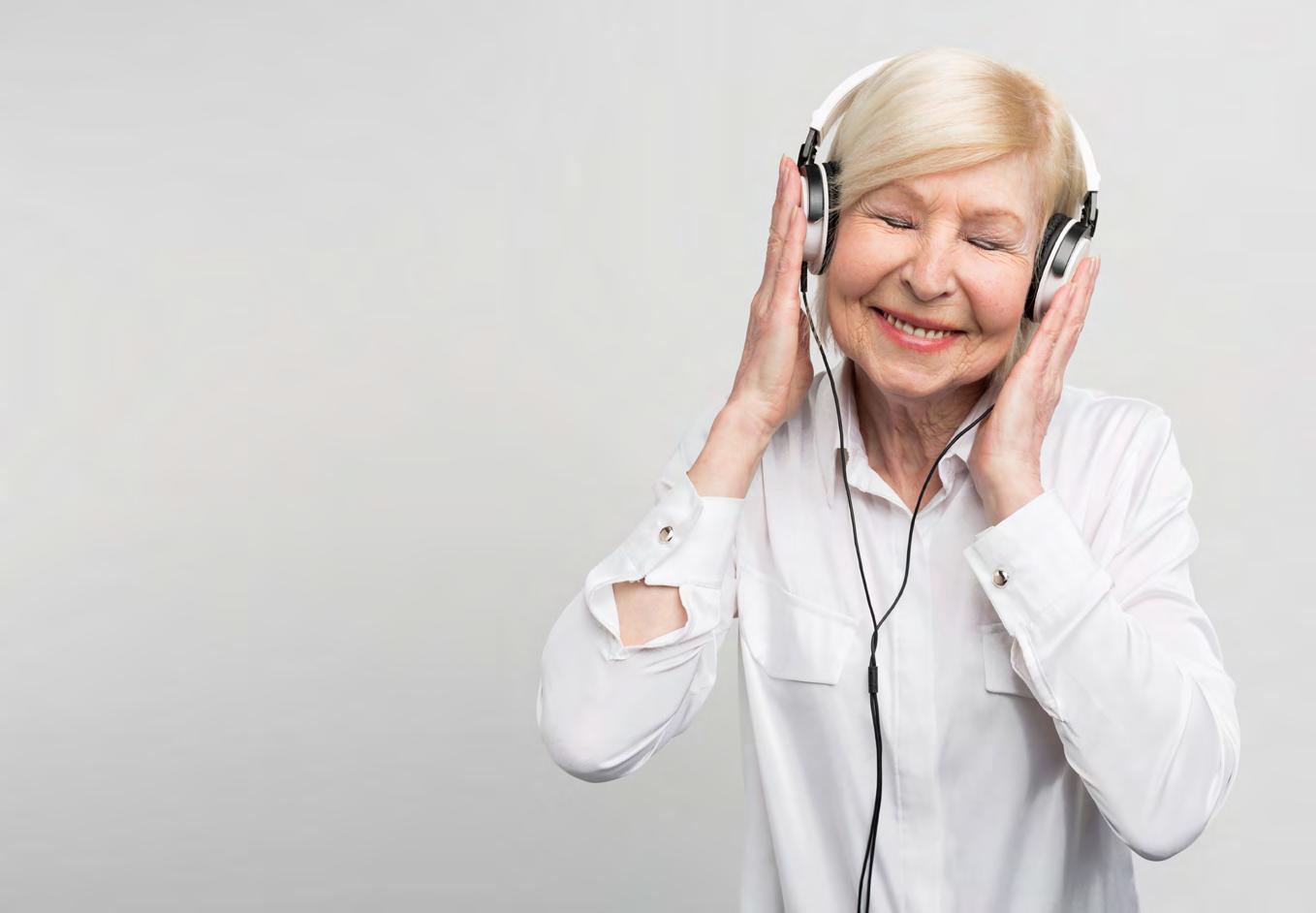

name the unnameable and communicate the unknowable.
It has always been universally understood that listening to favorites is enjoyable and can lift one’s mood. However, during the past few years we’ve come to better understand that therapeutic value music can have on those with dementia.
For qualified individuals, AOS & Friends Care o ers a program which provides a music player loaded with personalized songs.

THE HIDDEN EPIDEMIC OF MUSCLE LOSS—AND HOW TO REVERSE IT AFTER 50
continued from cover
Known medically as sarcopenia, this age-related decline in muscle mass and strength begins quietly, often in our 40s, and accelerates with each passing decade. Derived from the Greek root words sarx (flesh) and penia (loss), sarcopenia is a decline in muscle mass, strength, and function. According to research published in Nutrients (2016), “One of the major threats to living independently is the loss of muscle mass, strength, and function that progressively occurs with aging, known as sarcopenia” (Baum et al.). Left unchecked, it can lead to frailty, loss of independence, higher risk of falls, slower recovery from illness, and even early death.
If you’re considering starting a new exercise or strength program, you may want to assess your readiness to begin. The PAR-Q is a great start. The PAR-Q is the Physical Activity Readiness Questionnaire and can help you determine what to address when seeing your doctor before beginning a new program. You can simply search: "PAR-Q questionnaire" in your search engine.
One online option is available here:
Another option is also included in the CDC’s program linked below.
The Centers for Disease Control and Prevention has a strength program for seniors: Growing Strong: Strength Training for Older Adults. The program includes 6-steps for starting your journey, a 3-part program for getting stronger and a 12week workbook for staying on track! If you’re ready for a well-researched, easilyaccessible program, this is a great start.
https://www.cdc.gov/physicalactivity/ downloads/growing_stronger.pdf
• Eggs
• Greek yogurt
• Lean poultry or fish
• Tofu, tempeh, or legumes
• Protein shakes (especially if appetite is low)
Try to spread protein intake throughout the day, rather than eating most of it at dinner. Muscle maintenance is an ongoing process, not a once-a-day event.
It’s easy to miss the early signs of sarcopenia. Here are a few red flags to watch for:
• You’ve lost weight, but not intentionally
• You feel less steady or tire more easily when walking
• Getting out of chairs or off the floor feels harder (you have to hold onto a chair’s arm or push off from the sofa)
• You’ve noticed a decline in grip strength (you can’t open the jar of jam or your hands shake when carrying grocery bags)
• Daily tasks feel more fatiguing than they used to If these sound familiar, don’t panic. Muscle loss can be reversed, especially when caught early.
Building a Plan: Simple Steps to Get Stronger
You don’t need to overhaul your life overnight. Start with these three steps:
1. Add strength training twice per week. Start with light weights, resistance bands, or even bodyweight. Focus on compound movements like squats, rows, and presses.
2. Prioritize protein. Include a high-protein food at every meal. A postexercise protein snack can also help muscle recovery.
3. Move daily.
Walk, stretch, dance, do yoga—keep your body in motion. Even light movement enhances blood flow and mobility.
A New Chapter of Strength
Aging is inevitable—but decline is not. Physical therapist Dr. Sara S. Morrison says, "Muscle weakness is a normal part of aging. If not addressed, it can lead to poor balance or inability to perform your usual tasks. Being proactive to keep up your strength is one of the best ways to maintain independence as you age."
(30g protein per serving)
One of the hardest parts about eating enough protein is trying to balance it with eating enough of all the other nutrients our bodies need, including fiber! Meat doesn’t have fiber, so we add it in with other foods such as vegetables, grains, beans and legumes, and nuts and seeds. It’s a lot to think about!
This recipe combines both: high protein and high fiber (about 8-10 grams per serving, which is 30%-40% of recommended totals). This stew is soft, comforting, and hearty—great for batch cooking and reheating.
Ingredients (4 servings):
2 cups cooked shredded chicken (rotisserie works great)
1 cup dry red lentils, rinsed
1 carrot, diced
1 celery stalk, diced
1 small onion, finely chopped (optional)
1 tsp turmeric
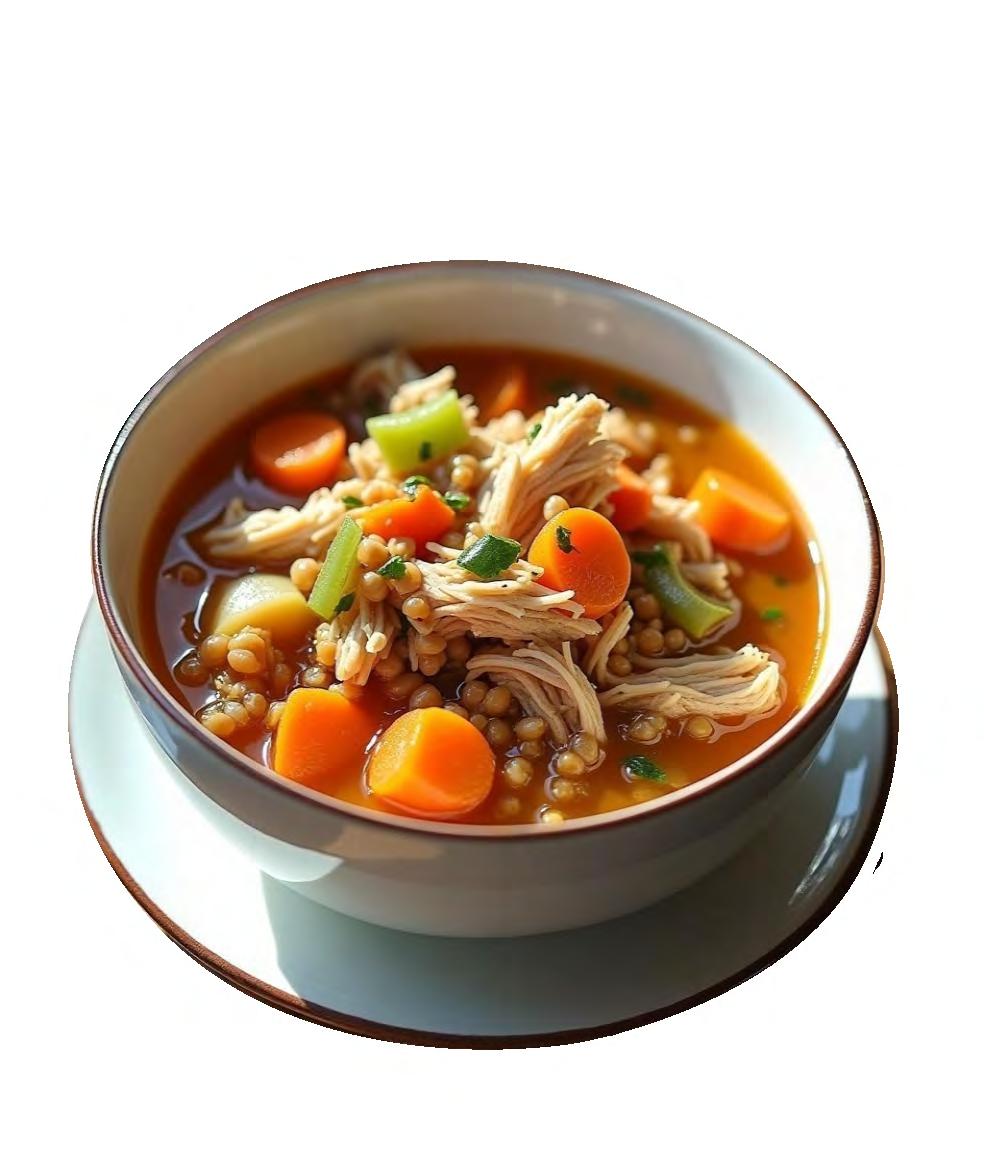
½ tsp thyme
4 cups low-sodium chicken broth
Salt and pepper to taste
Optional: squeeze of lemon or drizzle of olive oil before serving
Instructions:
1. In a large pot, sauté onion, carrot, and celery in a bit of oil until soft (about 5 minutes).
2. Add broth, lentils, turmeric, and thyme. Bring to a boil.
3. Reduce heat, cover, and simmer 20 minutes or until lentils are soft.
4. Stir in shredded chicken. Simmer another 5–10 minutes.
5. Season to taste and serve warm.
(20–25g protein)
As a kid, I remember eating cottage cheese with fruit. Remember the old mandarin oranges and cottage cheese for breakfast? Well, it turns out cottage cheese is also great with savory flavors, making it a versatile and easy option for meals and snacks.
Here’s a fast, no-cook meal for breakfast, lunch, or light dinner.
Ingredients:
¾ cup low-fat cottage cheese
½ cup cherry tomatoes, halved
¼ avocado, sliced
1 hard-boiled egg, chopped
1 tablespoon olive oil
Salt and pepper to taste
Optional: sprinkle of everything bagel seasoning or fresh herbs
Instructions:
1. Spoon cottage cheese into a bowl.
2. Top with tomatoes, avocado, and chopped egg.
3. Drizzle with olive oil, add seasoning, and serve immediately.
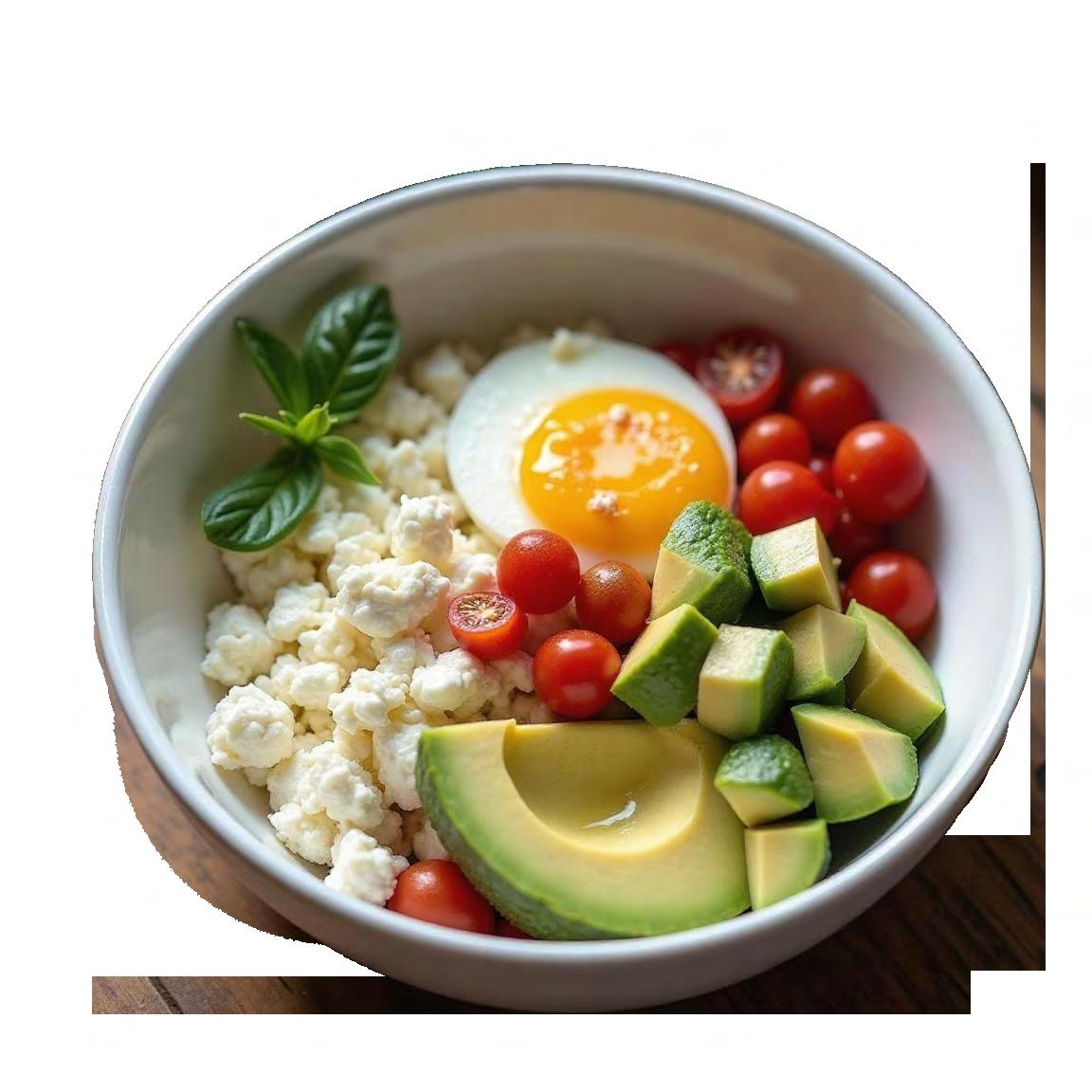
(8g protein per bite)
Snacks and desserts can also be great sources of protein. Snacks such as string cheese, hard-boiled eggs and even chocolate milk can offer a protein boost throughout the day. And adding a bit of protein with your post-dinner dessert is another way to sneak in a few grams to meet your daily total.
This recipe is a sweet treat that supports muscle health and satisfies cravings. It can be used as a dessert or snack, making it part of a simple, flexible diet.
Ingredients (makes ~10 bites):
1 cup rolled oats
½ cup natural peanut butter
¼ cup honey or maple syrup
¼ cup chocolate protein powder (plant-based or whey)
2 tbsp ground flaxseed
1–2 tbsp mini chocolate chips (optional)
Instructions:
1. In a mixing bowl, combine all ingredients. Mix well.
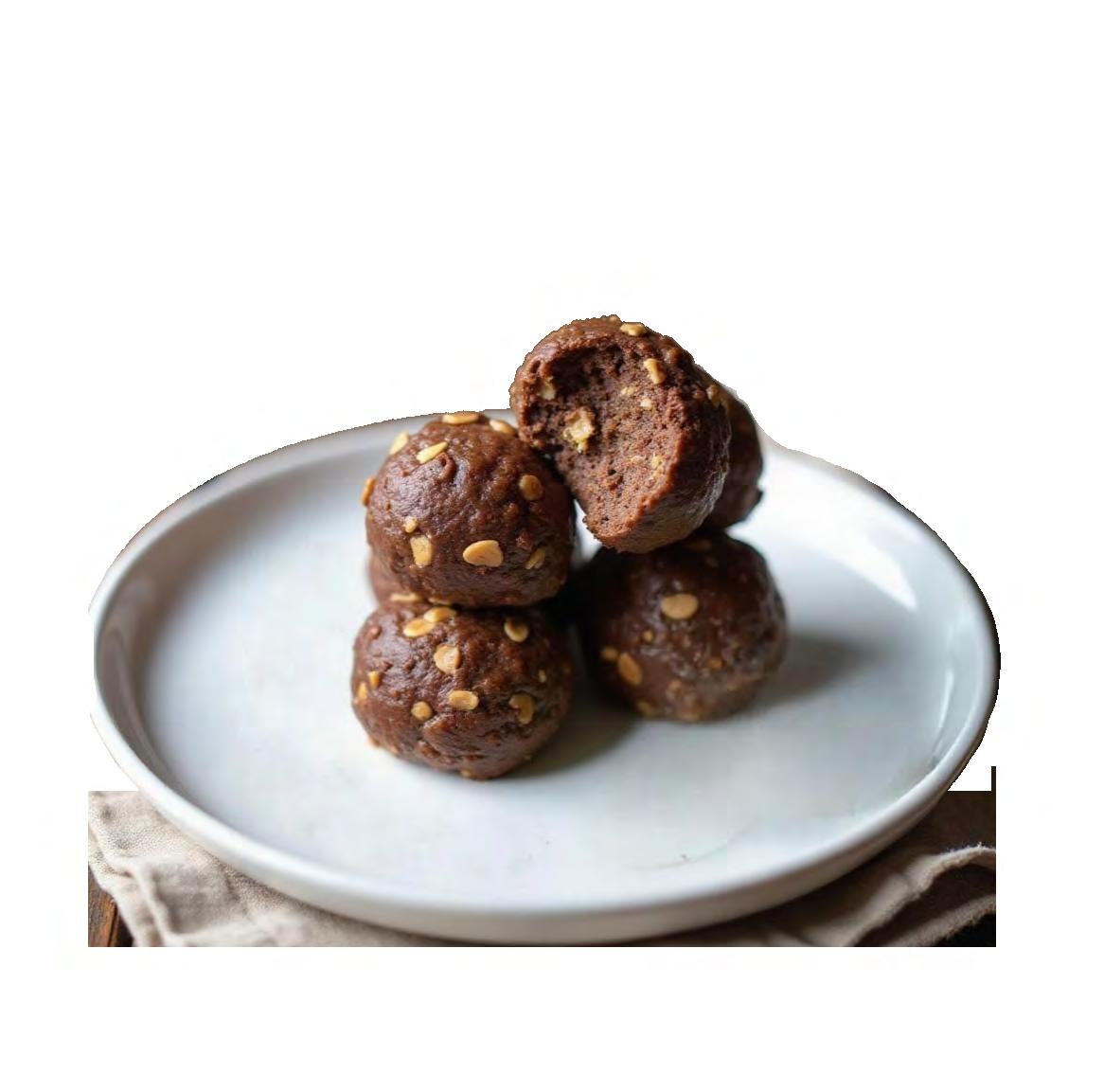
Amy Phariss, LCMHCA, Clarity Counseling NC
As we age, emotional health becomes just as important as physical well-being. Many seniors experience transitions such as retirement, health challenges, or the loss of loved ones — all of which can stir anxiety, grief, or loneliness. While traditional talk therapy or medication can help, one often overlooked method for emotional well-being is body-based emotional regulation.
In fact, the “father” of somatic experiencing, Peter Levine, says, “The body remembers what the mind forgets; it is through somatic experiencing that we can access and release stored traumatic memories.”
Whether it’s stored trauma from your past (childhood, marriages, parenting, work) or even issues arising in the present (recent loss, a medical diagnosis, or a new transition), the body holds onto much of what we feel.
TAPPING INTO THE BODY AND REGULATING EMOTIONAL EXPERIENCES THROUGH PHYSICAL GROUNDING EXERCISE CAN BE A POWERFUL TOOL FOR EMOTIONAL PROCESSING AND HEALING.
This approach emphasizes using the body to calm the mind. Our bodies hold emotional experiences — think of how your shoulders tighten with stress, or how your breath shortens with anxiety. As famed-author and researcher Bessel van der Kolk writes, “Being able to feel safe with other people is probably the single most important aspect of mental health; safe connections are fundamental to meaningful and satisfying lives.”
For seniors, who may have difficulty with cognitively intensive coping strategies, these gentle, sensory-based exercises can offer immediate comfort and grounding.
Here are five simple, accessible body-based practices that seniors can use to regulate emotions and feel more centered:
Holding a warm beverage, like tea or decaf coffee, is a powerful way to ground the body. Gently wrap both hands around the mug, close your eyes, and focus on the warmth seeping into your palms. Breathe in the aroma and allow your shoulders to relax. How it works: Warmth signals safety to the nervous system and engages the senses, calming anxiety.
1) Quench
6) Beach locale
10) Issue a caveat to
14) Personnel director, often
15) Sometime today
16) Cookie brand
17) It might be jumpin'
20) Lay waste to
21) When the expectant are
22) Type of whale
23) Permitted
24) Certain beach bird
27) "_ will be done"
29) Taro root
33) St. kin
34) Chinese dynasty (Var.)
36) Worthy of a medal
38) It's not proof of future success
41) Parting words
42) Complain pettily
43) When you might come down
44) Transmit
45) Suffix for a world record
46) Expression of praise (Var.)
47) Personals, e.g.
49) Select carefully
52) Like some elephants
56) Scared, to a stereotypical
60) From Methuselah's time
62) Connive
63) Common canine name
64) Garden bulb
65) About half of all deliveries
66) Addition column
67) All in
1) Certain herring
2) "That's_"
3) Music and dance are two
4) Continue
5) Baseball miscue
6) One who quarantines
7) Former French coin
8) Like an aristocrat
9) Follow afterward
10) Furniture material
11) La Scala solo
12) Cost of living?
13) School jotting
18) Soused one's sound
19) Boeing 757, e.g.
24) Spanish finger foods
25) A void doing
26) Fir tree exudation
28) Angry fits
1) Quench
6) Beach locale
10) Issue a caveat to 14) Personnel director, often 15) Sometime today
29) Good bit of history
30) Beneficiary
16) Cookie brand
31) Pronouncements
17) It might be jumpin'
32) Indian or Atlantic
20) Lay waste to
34) PC "brain"
35) Spell
36) Many mins.
21) When the expectant are expecting
37) Pair of jammies?
22) Type of whale
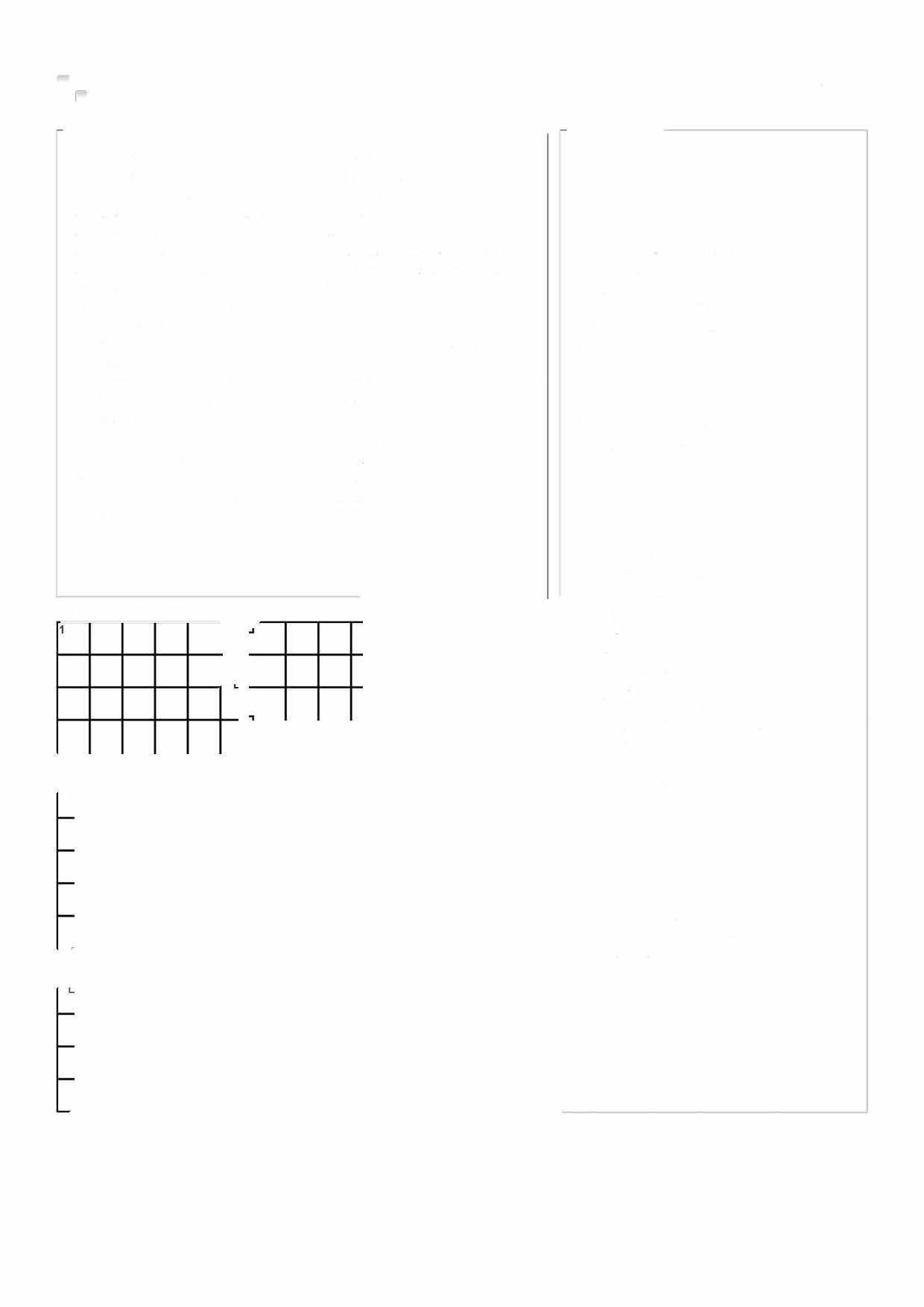
42) Complain pettily
43) When you might come down
44) Transmit
45) Suffix for a world record
46) Expression of praise (Var.)
47) Personals, e.g.
49) Select carefully
52) Like some elephants
23) Permitted
39) One of the Kennedys
40) Shunned ones
24) Certain beach bird
45) Break out of jail
27) "_ will be done"
46) Emphasize the importance of 4 7) Consumed
29) Taro root
56) Scared, to a stereotypical hayseed
60) From Methuselah's time
62) Connive
63) Common canine name
33) St. kin
48) Performed, in Shakespeare
50) Alien craft
34) Chinese dynasty (Var.)
51) Some boxing blows
52) Dangerous snakes
36) Worthy of a medal
53) It holds plenty of fodder
54) Get _ a good thing
38) It's not proof of future success
55) Play divisions
57) Part in a sitcom
58) One of "The Waltons"
59) U.S. govt. subgroup
61) "Hither" partner
64) Garden bulb
65) About half of all deliveries
66) Addition column
67) All in

